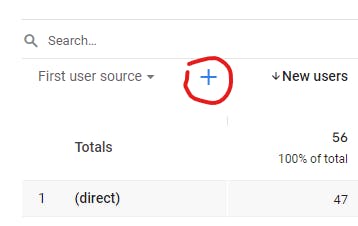Step-by-Step Overview: Leveraging Secondary Dimension in Google Analytics
Step-by-Step Overview: Leveraging Secondary Dimension in Google Analytics
Blog Article
Take Full Advantage Of Coverage Accuracy With Second Dimension in Google Analytics
Recognizing just how to make best use of reporting precision with secondary dimensions in Google Analytics can considerably boost the deepness of insights derived from data evaluation. By incorporating secondary dimensions strategically, marketers can uncover hidden patterns and relationships that might not be instantly obvious when examining key metrics alone.
Understanding Secondary Dimensions in Google Analytics
Second dimensions permit users to sector and even more dissect data past the primary measurement selected. While the main measurement might show the complete number of page views, adding a second measurement such as 'source/medium' can provide understandings into where the web traffic stemmed from.
Additionally, recognizing secondary dimensions is important for developing more personalized records tailored to certain organization goals. By choosing the ideal mix of secondary and main measurements, experts can uncover patterns, patterns, and connections that might otherwise stay surprise. This nuanced approach to data analysis empowers organizations to make informed decisions based on a thorough understanding of individual behavior across different measurements.

How to Use Second Dimensions
When leveraging secondary measurements in Google Analytics, the sensible application entails choosing certain data specifications to further refine understandings past the main measurement's extent. To use additional dimensions efficiently, begin by accessing the record or dataset where you wish to dive deeper into the information. Bear in mind that additional dimensions aid supply context and granularity to your main dimension information, enabling you to extract more actionable and purposeful insights from your Google Analytics records.
Leveraging Second Dimensions for Insights
Utilizing additional measurements in Google Analytics enables for a more comprehensive evaluation of data, providing useful understandings past the main dimension's extent. By leveraging additional dimensions, users can delve much deeper into the efficiency metrics of their site or application, discovering hidden patterns and fads that may not be instantly evident when only considering primary measurements.
One secret benefit of using additional measurements is the ability to sector and filter information much more specifically. This can aid analysts and marketing experts much better understand the habits of certain customer segments, such as new visitors versus returning site visitors, or website traffic coming from different geographic locations.
Moreover, second dimensions allow individuals to contrast and comparison various data factors within the very same record, offering a much more alternative sight of efficiency (Secondary Dimension in Google Analytics). Matching the main dimension of landing pages with secondary dimensions like gadgets or demographics can reveal which pages are most efficient in engaging users on different tools or from various market groups.
In essence, leveraging secondary measurements in Google Analytics encourages customers to remove richer understandings from their information, causing even more informed decision-making and ultimately, boosted efficiency.
Best Practices for Secondary Measurements
When assessing information in Google Analytics, integrating additional dimensions efficiently improves the depth of understandings originated from the main metrics. To make the most out of second dimensions, it is critical to stick to ideal practices that guarantee purposeful and precise straight from the source reporting. Firstly, it is necessary to pick secondary measurements that straighten with the primary statistics you are assessing. Choosing appropriate secondary dimensions aids in supplying context and a clearer understanding of the information being taken a look at.
Furthermore, it is suggested to restrict the variety of secondary measurements used in a solitary report to stay clear of overwhelming the analysis with also much information. Focusing on a couple of essential second dimensions each time can bring about more focused and workable insights. Additionally, think this article about explore various combinations of secondary and key measurements to discover one-of-a-kind fads and patterns that may not appear when considering the information in isolation.
Advanced Analysis Techniques With Secondary Dimensions
Exploring intricate information partnerships via the critical application of second dimensions can unveil nuanced understandings that boost the deepness of analysis in Google Analytics. By incorporating secondary dimensions with key information sets, innovative evaluation methods can be employed to extract valuable details.
Moreover, secondary measurements can improve the analysis of conversion paths by providing added context. Comprehending the different touchpoints a user engages with before converting can be crucial in maximizing the consumer journey - Secondary Dimension in Google Analytics. By making use of secondary measurements to look into specifics such as web traffic sources or tools utilized, marketing experts can customize strategies to target high-converting channels effectively
Verdict

To boost information analysis and gain much deeper insights into customer behavior, comprehending second dimensions in Google Analytics is crucial - Secondary Dimension in Google Analytics. Secondary measurements enable users to sector more information and additionally study data past the primary measurement chosen. While the key dimension might display the overall number of page sights, including a secondary measurement such as 'source/medium' can provide insights into where the website traffic originated from.When leveraging secondary measurements in Google Analytics, the functional application entails choosing certain data criteria to additional improve understandings past the key measurement's scope. Remember that additional measurements aid offer context and granularity to your main measurement information, allowing you to extract even more actionable and purposeful understandings from your Google Analytics records
Report this page